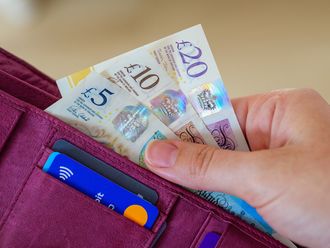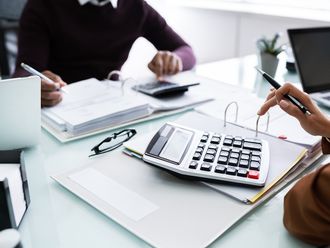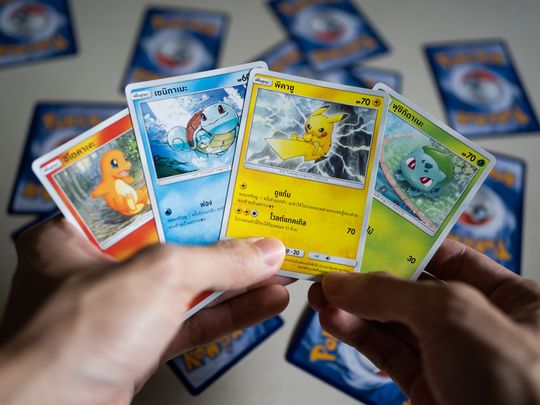
Dubai: Collecting collectibles is widely considered a hobby, driven largely by the desire to acquire something that evokes value, beauty, or nostalgia. Limited-edition toys, stamps, sports memorabilia, and decorative motifs are just some of the many things that avid collectors live with and enjoy.
But collections are not always for fun. Collectible items can increase in value and offer high returns after a period. In a world where everyone is hungry for returns, experts have observed that such rare pieces now hold a refreshing appeal for investors.
Similarly, investing in collectibles such as Pokémon cards have proved to be quite rewarding, especially if you snag some rare or first edition cards, mainly as these collectibles have seen significant growth over the years. So, if you do your research and invest wisely, you could see some impressive returns.
In addition to each card having three versions, there are also three types of rarities. Collectors collect Pokémon cards because they become valuable when they are in good condition – a key factor because it's predominantly collector-based.
Especially for these older cards, people are really looking for items that are in the best condition. The most famous and valuable card in all of Pokémon is the First Edition Charizard. Besides the awesome artwork, part of the Charizard’s appeal comes from its role in the Pokémon video game.
Since the Pokémon company introduced Pokémon trading cards in 1996, prices for first-edition cards have appreciated by over 10,000 per cent. The most money ever spent on a Pokémon card is $5.3 million (Dh19.4 million), with the top cards costing between $1,000 and $100,000 (Dh3,673-Dh367,300).
With the recent surge in Pokémon card prices, can collecting such collectibles turn into a lucrative investment opportunity? To find out, we interviewed Hassan Tamimi, Managing Director at The Little Things ME, who is a 27-year-old avid collector of novelty and vintage items, and a third-generation businessman who runs collectibles stores across the UAE.
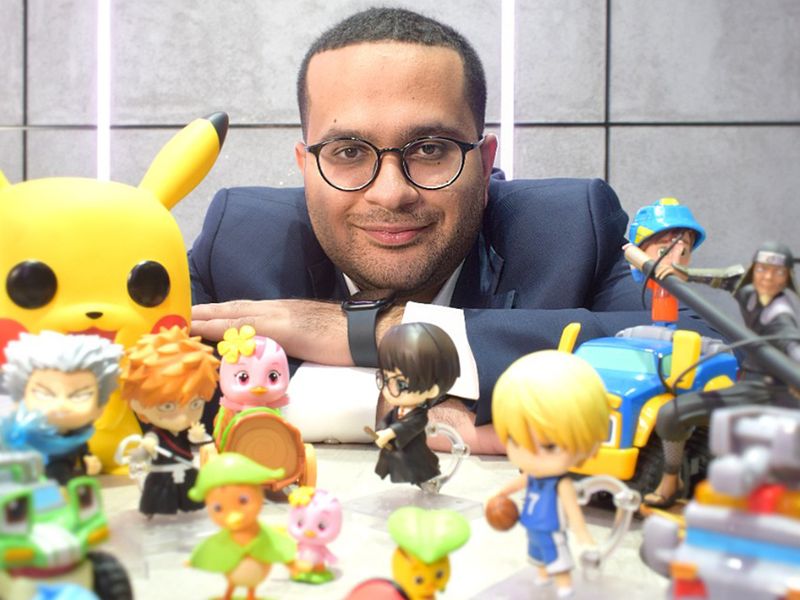
Q: Can collecting Pokémon cards become more than just a childhood hobby?
Tamimi: Yes, the surge in Pokémon card prices has indeed transformed collecting from a childhood pastime into a significant market for collectors and investors alike. Historically, Pokémon cards were primarily seen as toys or game pieces. However, in recent years, we've seen rare cards like the first Edition Charizard or Pikachu Illustrator card selling for hundreds of thousands of dollars at auctions.
This shift underscores a growing recognition of Pokémon cards as valuable collectibles akin to fine art or rare coins. For instance, in 2020, a mint condition Charizard card sold for over $300,000 [Dh1.1 million], attracting interest from not just traditional collectors but also celebrities and investors. This growing market indicates that collecting Pokémon cards has evolved into a serious investment opportunity, with parallels to other forms of asset collection.
Q: Can Pokémon cards be a viable way to diversify one's investment portfolio?
Tamimi: While Pokémon cards can add an interesting twist to your investment portfolio, it's important to be careful. The value of Pokémon cards can change a lot and is often influenced by trends in the collecting world. Diversifying your investments is a key strategy, and adding something different like Pokémon cards might help balance out more traditional investments like stocks and bonds.
For instance, during the uncertainties of the Covid-19 pandemic, the demand for rare Pokémon cards went up, suggesting they could offer some protection when other investments are struggling. However, it's important to do thorough research and maybe even talk to experts in collectibles before investing a lot of money in Pokémon cards. As with any investment, there are risks, and potential investors should consider these carefully against their financial goals and how much risk they're willing to take.
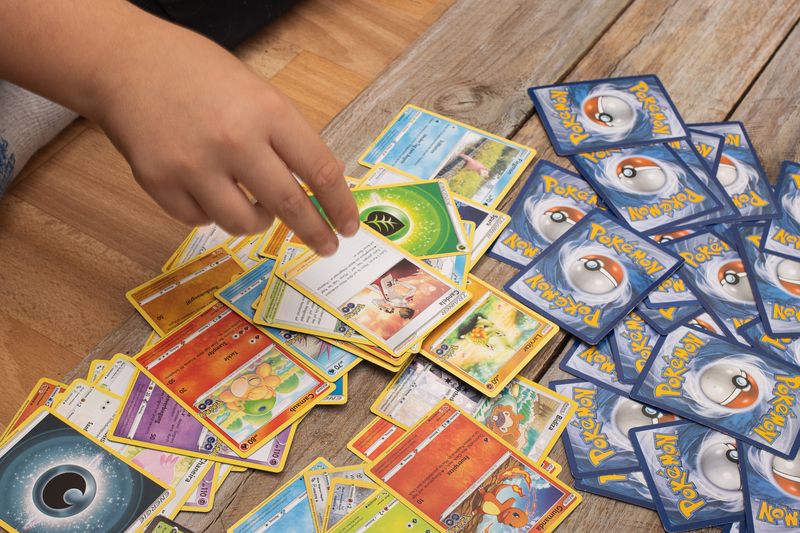
Q: Is the latest hype on Pokémon cards sustainable, or is it a bubble waiting to burst?
Tamimi: The sustainability of the current hype around Pokémon cards is uncertain and open to interpretation. On one hand, the recent surge in prices might be driven by nostalgia and social media, which can sometimes lead to temporary spikes in demand. Historically, markets like those for Beanie Babies and comic books have experienced similar trends where initial excitement was followed by a decline in value.
On the other hand, Pokémon has maintained a growing fan base for over 25 years, which could suggest a more stable interest. The brand's strategic releases and collaborations, as well as the ongoing popularity of its games and media, contribute to continued demand. For example, the Pokémon franchise celebrated its anniversary in 2021, bringing renewed attention, while driving up its value.
Ultimately, while there might be fluctuations in the market, the enduring appeal of Pokémon and its strategic brand management suggest that there could be a lasting base of collectors and investors. It's important for potential investors to stay informed and consider both the potential risks and rewards.
Secondly, the market for Pokémon cards is widespread with counterfeits, which can be difficult to spot even for experienced collectors. Buying fake cards can result in a complete loss of investment, as these cards have no value.
Also, sellers may falsely advertise rare Pokémon cards as being in high demand, leading buyers to pay exorbitant prices for cards that are not actually worth as much as they thought. Moreover, an unregulated market for Pokemon cards makes it easier for fraudsters to take advantage of unsuspecting buyers. This can result in significant financial losses for those who are not cautious.
Moreover, the market for Pokémon cards is limited, with only a small number of dedicated collectors and investors. This can make it difficult to find buyers for your cards when you want to sell, potentially leading to significant losses.
To mitigate these risks and related losses, matter experts advise to buy from reputable sellers, authenticate the value of the cards, and store them properly in protective cases. The way you access the condition and value of your Pokémon Cards is by looking out for scratches, bends, tears, and any signs of fading.
Q: What factors make Pokémon cards more valuable than others for investment purposes?
Tamimi: Several key factors determine the value of Pokémon cards, making some far more valuable than others. First and foremost is rarity. Cards that were printed in limited numbers or were part of special events tend to be much more sought after. For example, the Pikachu Illustrator card is extremely rare and highly prized due to its unique history and limited distribution.
The condition of a card is another crucial factor. Cards that have been kept in pristine condition, free from damage or wear, are significantly more valuable. Collectors often seek out cards that have been professionally graded by companies, which provide a reliable assessment of a card’s condition.
The age of the card also plays a vital role. Cards from the original 1999 set, especially the first edition ones, are highly valued because they represent the beginning of the Pokémon card era. These cards have a nostalgic appeal and are often considered cornerstones of any serious collection. The popularity of the Pokémon featured on the card can greatly influence its value as well. Iconic characters like Charizard and Pikachu, are favourites among collectors, and cards featuring these often fetch high prices.
Lastly, current trends and the broader popularity of Pokémon as a brand can impact card values. When Pokémon media, such as new games or movies, captures the public’s attention, interest in the cards tends to increase. This means that staying informed about the latest Pokémon developments can be beneficial for potential investors.
Verdict: Is it financially worth getting into Pokémon cards?
While the answer to this question yes, but it's important to keep in mind that not every Pokémon card is super valuable – some hold their value better than others. Cards that are rare or out of print are more likely to increase in value than common cards.
Aside from the above-mentioned risks, Tamimi adds that it is key to bear in mind that even if you happen to have the rarest card in the world in your collection, it will only sell for its full value if it's in mint or near-mint condition, as any flaws will only cause it to lose value. So, preserving them as good as new is key!






